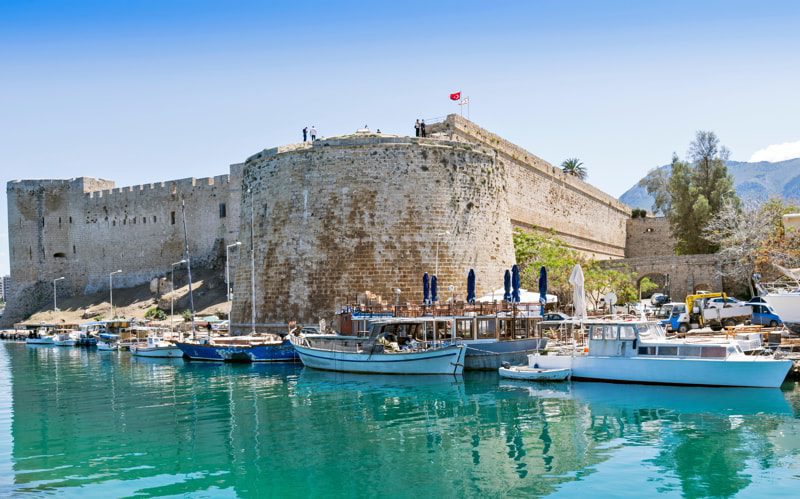Northern Cyprus is known for its ancient ruins, architectural structures, and artistic destinations; however, its political story may cause concern for some travelers. The northernmost third of the country is the Turkish-controlled Republic of North Cyprus, while Greece governs the remaining land known as the Republic of Cyprus. The two parts of this island are divided by a Green Zone which is controlled by the United Nations.
Northern Cyprus is a welcoming and safe place for tourists and foreign residents alike. However, few people take advantage of the treasure trove of historic sites and natural beauty so when you visit, you may find yourself alone in some of the most amazing places in Europe with free rein to roam and touch a piece of the past.
The Capital City
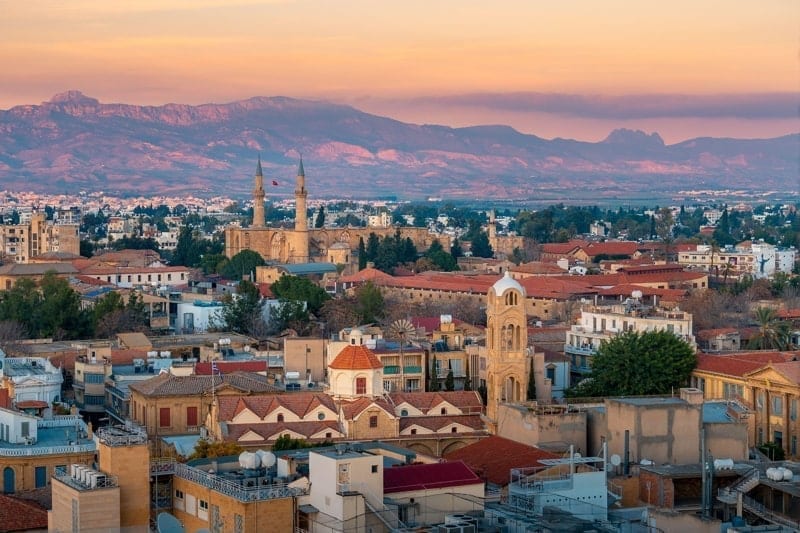
Nicosia is the only capital city in the world that is divided by a UN buffer zone. You can cross the buffer in a few spots including at Markou Drake where you can stay in the Green Zone and enjoy a coffee at the Home for Cooperation.
The Turkish side of the capital city recognized the importance of tourism and created a self-guided walking tour by painting a blue line on the sidewalks throughout the town to guide people to the best sites.
The Central Area
The heart of Northern Cyprus’ tourism is the coastal city of Kyrenia. The jewel of this area is Kyrenia Castle where you will find expansive harbor panoramas and city center views from atop the old stone walls. Inside the castle, you’ll find a small interior church and a Shipwreck Museum.
The 11th-century mountain castle ruins of St. Hilarion is an adventure destination hidden in the rocky mountainside. To fully experience the views of the Mediterranean Sea and the city center, tackle the steep stone steps to the top. Also, cooler temps and a strong breeze may greet you upon arrival. Don’t be surprised if you see some mountain goats along the way.
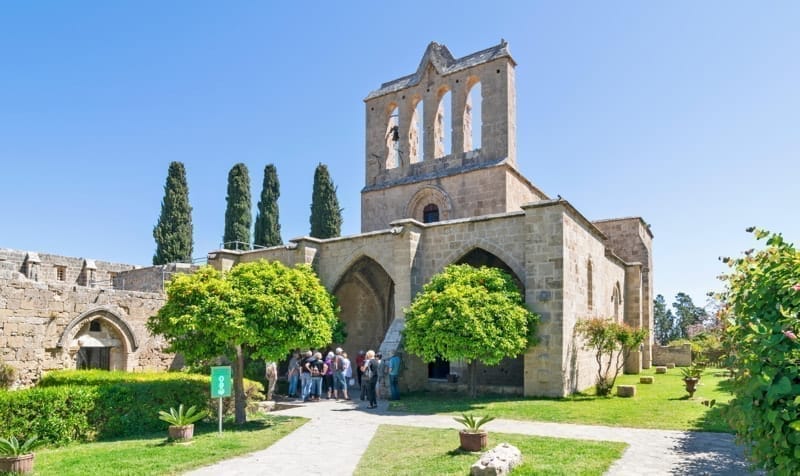
The stunning Bellapais Abbey ruins are a must-see. This 13th-century monastery features ornate archways and extraordinary sea views from the rooftop in one direction and mountain scenery in the other. There’s also a small cafe and museum within the Abbey.
The West Area
Few foreigners visit the western end of Northern Cyprus, but for a well-preserved, authentic, and surprising taste of Cyprus, it’s worth the trip.
The Agios Mamas Church appears neat and tidy outside, but when you walk inside, you are greeted by a breathtakingly ornate interior. Glittering multi-tiered chandeliers illuminate detailed mosaics, frescoes, and carvings. Although the church is usually locked, head next door to the Morphou Archaeology and Nature Museum where someone will let you into the church.
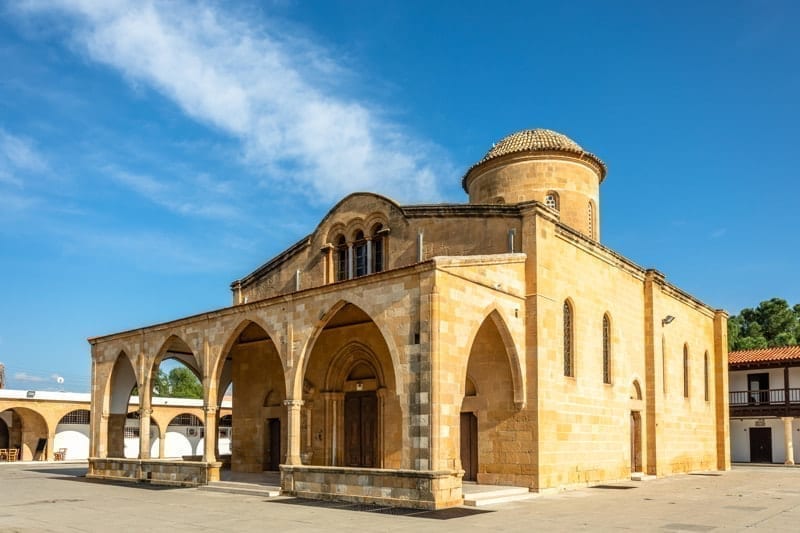
While you’re in the Morphou Archaeology and Nature Museum, don’t miss the Roman-era gold exhibits that were discovered in 2005 in a local drain system. Also, spend some time wandering the gardens and keep an eye out for the preserved mutant sheep.
Finally, in this area be sure to explore the 6th-century Greek City of Soli. You’ll find well-preserved Roman mosaics, a large amphitheater, a basilica, and an ancient marketplace agora.
The Northeast Area
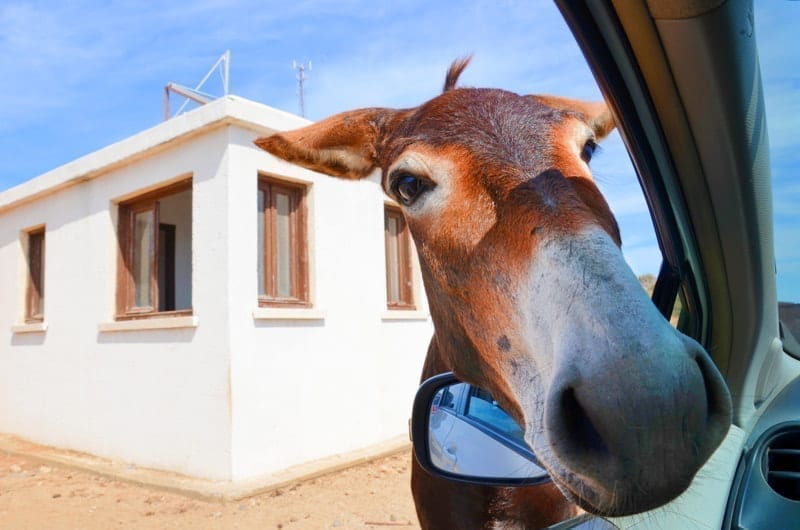
Much of this part of the country is unspoiled natural land with expansive sandy beaches and a variety of reptiles and birds. You’ll probably encounter some of the 1,000 feral donkeys that live in this area. Bring a bag of carrots and you’ll make friends quickly.
Consider spending a few days at the Eco-village at Buyukkonuk/Komi Kebir. Here you can sample local foods, enjoy Cypriot music and dancing, and stay in one of only two guesthouses for a full nature immersion.
The Southeast Area
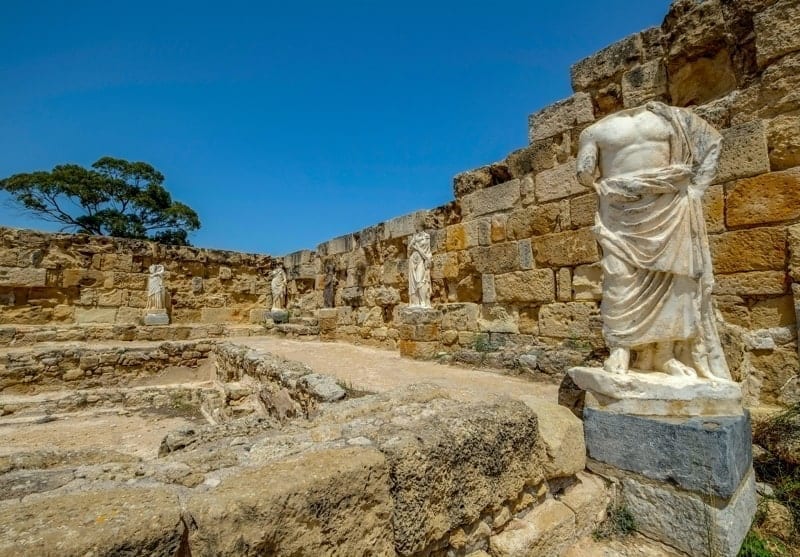
The walled city of Gazimağusa also known as the District of Churches features many historic ruins and a collection of churches including the Cathedral of St. Nicholas which is now a mosque called Lala Mustafa Pasha. The St. Barnabas Monastery, which is named after the patron saint of the island, is home to religious icons and priceless artifacts still in excellent condition.
The Ancient City of Salamis is a stunning set of ruins worth visiting. You’ll be awestruck by rows of Roman columns from what was once the Gymnasium, ornate marble statuary, bright floor mosaics, and an amphitheater that held 15,000 spectators centuries ago. This area survived the occupation of many different countries, but it was eventually toppled by two earthquakes in the 4th-century.
Discover the Beauty and History of Northern Cyprus
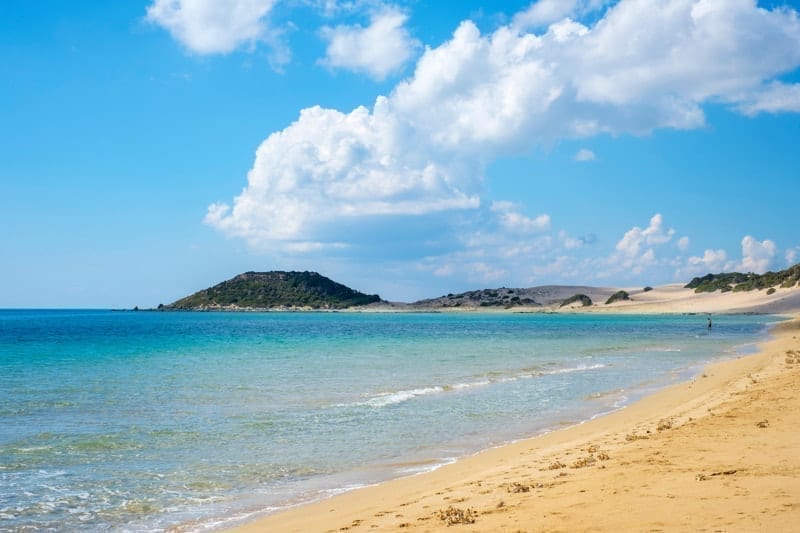
While some people are hesitant to spend time in Northern Cyprus, now is the time to experience this amazing country for yourself. Come see the ruins, the art, the history, and the natural beauty and explore untouched areas without the crowds usually found in Europe.







